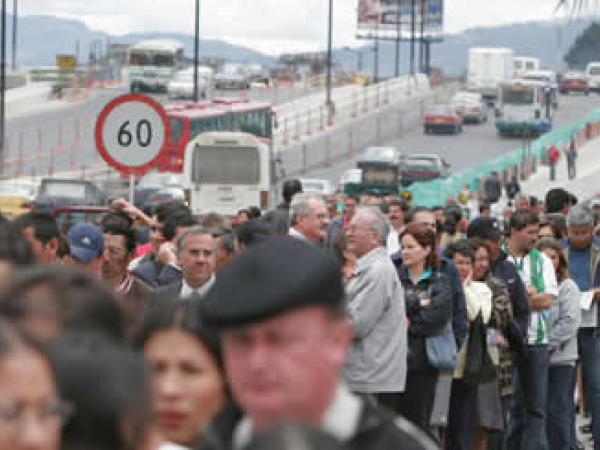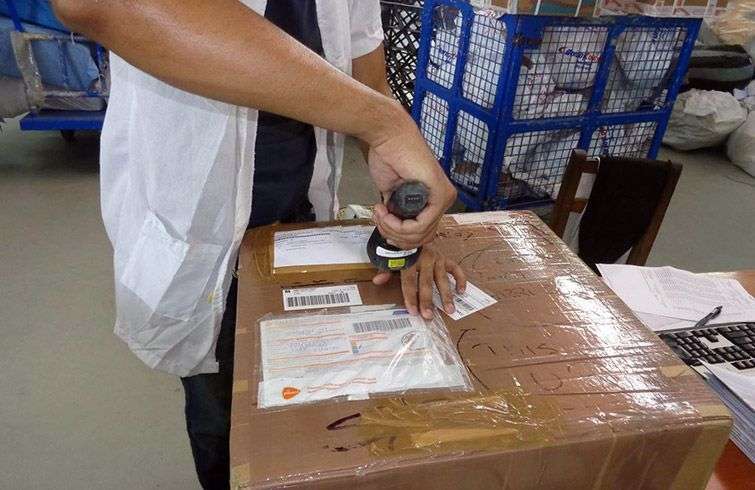“Colombia by 2050 will be a country with zero extreme poverty, with a consolidated middle class and with equality and opportunities for social mobility”as the basis for continuous human development, this is one of the four pillars with which Vision Colombia 2050 is built, the roadmap launched by the national government in recent days for the next 28 years.
(Read: Do not buy dollars, Petro’s recommendation to Colombians).
The objective, on the one hand, is to end the condition of extreme poverty, in which 12.2% of the Colombian population finds itself today, that is, 6.11 million people currently live in the country with less than $161,099 a month, which for a four-person household would be $644,396.
To this end, the document also has as its goal that the middle class, in which today is the 27.8% of the population (13.89 million people today) will reach 55.4% of the population in 2050.
joint development
But to reach these figures there is a long way to go. This is how Carlos Sepúlveda, dean of economics at the Universidad del Rosario and also academic coordinator of the Colombia Vision 2050 document, expresses it.
“ANDThis is a tremendously ambitious and complex agenda, and what was really sought was to define tremendously ambitious arrival points and an agenda of projects, strategies and action measures that would enable that path”, assured Sepulveda.
According to the academic, the commitment to have a consolidated middle class and move to almost 60% implies making a productive transformation, increasing total factor productivity, it also implies a transformation of regional economies, and a transition to carbon neutrality.
“The important thing is to measure that complexity, and understand that it is the gradual advance of all these policies, not just one, which allows us to reach that compliance. All the points are related and it is the fulfillment of all of them together that can allow us to reach those goals,” Sepúlveda also said.
For Jorge Restrepo, an economist and professor at the Javeriana University, these goals are feasible, and he even assures that before the pandemic we were making progress towards that goal. consolidation of the middle class.
“In the last 22 years, Colombia has been rapidly lifting millions of people out of poverty, but all that was reversed during the crisis due to the confinements and later due to the strike, but Colombia has already done it,” said Restrepo, who assured that for to continue on this path is necessary for the country to continue growing, and for public social spending to be redistributive, instead of regressive.
This is agreed by Carlos Alberto Garzón, professor at the U. de la Sabana and co-coordinator of the Quantitative Research Methods Technical Group, who assures that “of course it is possible as long as an economic growth path of more than 5% is maintained. ”.
Also whenever the sectoral economic composition advances to services with high added value, the marginal productivity increase by pushing up wages in general, especially the minimum wage, a transformation of the tax structure is achieved and through a broader social protection system.
Economist Beethoven Herrera, professor emeritus at U. Nacional and U. Externado, reiterated that projections are often not fulfilled, and that it is not a matter of “affirming that poverty or inequality will decrease for no reason, but because measures are taken for it”.
According to the academic, the country has to work in various areas, such as, for example, half of the rural country lacks property title. “If this agrarian structure is not removed, it is not possible to think that poverty in the countryside will improve,” he assured.
According to the expert, there are consolidated structural policies that prevent these goals from being met, as is the case with the cadastre, essential for municipal taxes to improve, or the high costs of banking operations, or the difficulty in productively and formally absorbing young people in the labor market.
(Also: Recession or stagflation: the economic future for Latin America).
“That is why all the designs for the future go through taking measures so that this is fulfilled, with an investment of 0.4% of GDP destined for research, it is impossible for the country to improve in terms of competitiveness. Countries smaller than us and with fewer resources have improved, but measures must be taken to make that happen, ”he assured.
LAURA LUCIA BECERRA ELEJALDE
















